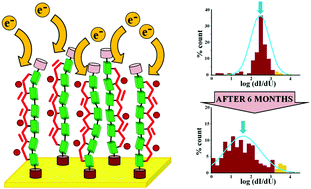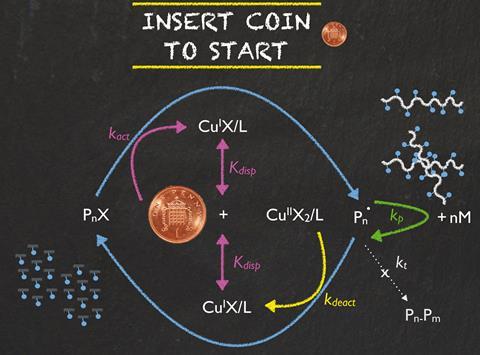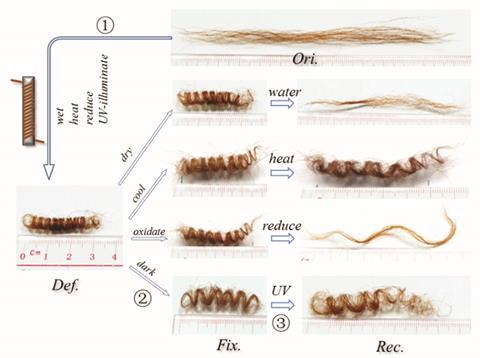 Franck D’Agosto is a member of Advisory Board for Polymer Chemistry and CNRS research director at the University of Lyon in the group of Chemistry, Catalysis, Polymers and Processes (C2P2). D’Agosto’s research focuses on implementing original and simple chemistries to control the architecture of polymers both in the field of polyolefins and in aqueous dispersed media.
Franck D’Agosto is a member of Advisory Board for Polymer Chemistry and CNRS research director at the University of Lyon in the group of Chemistry, Catalysis, Polymers and Processes (C2P2). D’Agosto’s research focuses on implementing original and simple chemistries to control the architecture of polymers both in the field of polyolefins and in aqueous dispersed media.
Work published almost 40 years ago exploited the livingness of poly(t-butyl styryl)-lithium chains to initiate the dispersion polymerization of styrene (St) or divinylbenzene in n-hexane, and indeed pioneered the concept of what is today called polymerization-induced self-assembly (PISA). Starting from hydrophilic polymers prepared by reversible-deactivation radical polymerization, emulsion or dispersion polymerization can now be conducted in water to generate block copolymer particles by PISA. Although PISA has not replaced conventional surfactant-containing emulsion polymerization in producing industrial-scale polymer latexes, it has rapidly evolved into a versatile tool capable of producing amphiphilic block copolymers directly in water at high solids contents and various micellar architectures in the absence of added cosolvents. PISA is now a mature topic for which scientists are investigating new uses.
You can find all Advisory Board’s Top Picks papers in our web collection.
Focus on polymerisation-induced self-assembly (PISA)
1. Synthesis of zwitterionic, hydrophobic, and amphiphilic polymers via RAFT polymerization induced self-assembly (PISA) in acetic acid
D. Das, D. Gerboth, A. Postma, S. Srinivasan, H. Kern, J. Chen, D.M. Ratner, P.S. Stayton, A.J. Convertine, Polym. Chem., 2016, DOI:10.1039/C6PY01172A.
By Dr. Ming Liang Koh. Ming obtained his PhD at the University of Sydney. Following a postdoctoral position at the University of Warwick, he is currently researching hybrid inorganic-organic latexes in the group of C2P2 at the University of Lyon.

While PISA has quickly matured as a topic, fundamental research still plays an important role to further widen opportunities. In this study, Das et al. considered the difficulty in marrying the poor solubility of hydrophobic monomers in aqueous media with the poor solubility of zwitterionic polymers in organic solutions.
This is often the dilemma encountered when one wants to incorporate prodrug monomers with hydrolytically unstable linkages into a polyionic scaffold. RAFT polymerizations of a hydrophilic sulfobetaine monomer (2-(N-3-sulfopropyl-N,N-dimethyl ammonium)ethyl methacrylate, DMAPS) and hydrophobic lauryl methacrylate (LMA) was then considered in acetic acid using solvophilic macroRAFT composed of hydroxyethyl methacrylate (HEMA) and poly(ethylene glycol) methyl ether methacrylate (O300). Well-defined amphiphilic block copolymers were produced using PISA.
This was successfully applied to copolymerizations of DMAPS with LMA and/or other biorelevant hydrophobic methacrylates incorporating hydrolytically sensitive links that were successfully preserved in a poly(DMAPS) scaffold. The preparation of macrophage targeting mannose-functionalized solvophilic macroRAFT also allowed the design of original polymeric prodrug nanoparticles.
2. Synthesis, characterisation and Pickering emulsifier performance of poly(stearyl methacrylate)–poly(N-2-(methacryloyloxy)ethyl pyrrolidone) diblock copolymer nano-objects via RAFT dispersion polymerisation in n-dodecane
V. J. Cunningham, S. P. Armes and O. M. Musa, Polym. Chem., 2016, 7, 1882–1891
By Dr. Samuel Pearson. After obtaining his PhD in Australia, Sam completed a postdoctoral position in C2P2 group at the University of Lyon and is currently a Marie Curie individual fellow at the University of Pau. His research interests include light-responsive polymers, self-assembly systems, and polymer/inorganic nanohybrids.
 The Armes group has been pivotal in developing novel PISA systems, and this latest paper in Polymer Chemistry exploits PISA-derived nanospheres as Pickering emulsifiers with a surprising twist. A stearyl methacrylate-based macroRAFT agent was chain extended in n-dodecane with N-2-(methacryloyloxy)ethyl pyrrolidone – a more polar core-forming monomer than previously employed by the authors – to give very fast polymerisation and a typical range of self-assembly morphologies captured in a detailed phase diagram.
The Armes group has been pivotal in developing novel PISA systems, and this latest paper in Polymer Chemistry exploits PISA-derived nanospheres as Pickering emulsifiers with a surprising twist. A stearyl methacrylate-based macroRAFT agent was chain extended in n-dodecane with N-2-(methacryloyloxy)ethyl pyrrolidone – a more polar core-forming monomer than previously employed by the authors – to give very fast polymerisation and a typical range of self-assembly morphologies captured in a detailed phase diagram.
Using low shear mixing, the spherical nano-objects proved effective as Pickering stabilisers for water-in-oil emulsions, as expected for such hydrophobic particles. At high shear, however, entirely unexpected behavior was observed: the particles inverted to give hydrophilic nanospheres stabilising oil-in-water emulsions, presenting a new puzzle and new opportunities in PISA research.
3. Room temperature synthesis of poly(poly(ethylene glycol) methyl ether methacrylate)-based diblock copolymer nano-objects via Photoinitiated Polymerization-Induced Self-Assembly (Photo-PISA)
J. Tan, Y. Bai, X. Zhang and L. Zhang, Polym. Chem., 2016, 7, 2372–2380.
By Dr. Winnie Nzahou Ottou. Winnie is a post-doctoral research fellow at the University of Lyon in the group of C2P2. Her research focuses on catalytic olefin polymerization and the design of new functionalized polyolefins through both in situ reactions and post-polymerization modifications.
 In this study, Tan, Zhang et al. report the photoinitiated polymerization-induced self-assembly (photo-PISA) of 2-hydroxypropyl methacrylate (HPMA) using poly(poly(ethylene glycol) methyl ether methacrylate) (PPEGMA) as macro-RAFT agents at 25 °C in water.
In this study, Tan, Zhang et al. report the photoinitiated polymerization-induced self-assembly (photo-PISA) of 2-hydroxypropyl methacrylate (HPMA) using poly(poly(ethylene glycol) methyl ether methacrylate) (PPEGMA) as macro-RAFT agents at 25 °C in water.
By a simple “ON/OFF” switch of the light source and by tuning the reaction parameters (e.g. solids content, degree of polymerization and molecular weight of the macro-RAFT agent), a series of PPEGMA-b-PHPMA diblock copolymer nano-objects with controllable morphologies (worms, spheres, and vesicles) were thus obtained. Interestingly, PPEGMA14-PHPMA200 nanoparticles (15% w/w) were found to exist as a soft physical worm gel at 25 °C and changed to spheres at 4 °C.
However, this transformation was irreversible presumably due to the effective steric stabilization effect of PPEGMA on the PHPMA-based nanoparticles. Zhang and coworkers then expand the scope of photo-PISA for the synthesis of various block copolymers nano-objects, and also provide an efficient method for making a new class of light and thermo-responsible biomaterials.
4. Surface-initiated polymerization-induced self-assembly of bimodal polymer-grafted silica nanoparticles towards hybrid assemblies in one step
Y. Zheng, Y. Huang, Z. M. Abbas and B. C. Benicewicz, Polym. Chem., 2016, 7, 5347–5350.
By Dr. Arne Wolpers. Arne obtained his PhD in Germany and is currently a postdoctoral researcher at the University of Lyon in the group of C2P2. His research focuses on the polymerization of ethylene using reversible-deactivation radical-polymerization (RDRP) techniques under mild conditions and the further processing of polyethylene.
 With their great expertise on polymer nanocomposites, researchers of the Benicewicz group demonstrated the first case of surface-initiated polymerization-induced self-assembly (SI-PISA) of nanoparticles, offering a facile and efficient one-step procedure to prepare hybrid assemblies.
With their great expertise on polymer nanocomposites, researchers of the Benicewicz group demonstrated the first case of surface-initiated polymerization-induced self-assembly (SI-PISA) of nanoparticles, offering a facile and efficient one-step procedure to prepare hybrid assemblies.
In this context, rather than performing conventional chain-extension, by utilizing a surface-immobilized RAFT agent, silica nanoparticles grafted from with solvophilic poly(2-hydroxyethyl methacrylate) (PHEMA) were successively grafted from for a second time in methanol with solvophobic poly(benzyl methacrylate) (PBzMA). The growth of PBzMA was well-controlled and with increasing molar mass, the nanoparticles assembled into a variety of one-dimensional structures.
The obtained assemblies were very stable and exhibited high nanoparticle concentrations. The manifold possibilities to tune the presented system and thus the formed hybrid structures indicate the potential of SI-PISA as a powerful new tool in the field of polymer nanocomposites.























